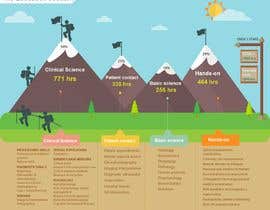The Impact Of Pose On Pain In The Back: Strategies For Maintaining Correct Placement During Daily Activities
The Impact Of Pose On Pain In The Back: Strategies For Maintaining Correct Placement During Daily Activities
Blog Article
Uploaded By-Conway Patton
Preserving proper stance isn't almost sitting up straight; it has to do with straightening your body in such a way that sustains your spine and minimizes the danger of neck and back pain. The way you sit, stand, and relocate throughout the day can substantially affect your back health and wellness. However how exactly can you make certain good alignment consistently, also during busy days filled with numerous activities? Let's delve deeper into the refined yet impactful modifications you can make to your everyday routine to keep your back delighted and healthy and balanced.
Significance of Correct Pose
Proper position is critical in preserving a healthy and balanced back and avoiding pain. When you rest or stand with great position, your spine is in alignment, decreasing stress on your muscle mass, ligaments, and joints. This placement allows the body to distribute weight uniformly, preventing excessive stress and anxiety on particular locations that can cause discomfort and pain. By maintaining your back appropriately straightened, you can also improve your breathing and food digestion, as slouching can press body organs and restrict their functionality.
Furthermore, keeping excellent stance can improve your total appearance and confidence. When you stand tall with your shoulders back and head held high, you radiate confidence and appear more friendly. Good stance can also make you really feel a lot more stimulated and sharp, as it promotes appropriate blood flow and allows your muscular tissues to work successfully.
Integrating proper pose into your daily regimen, whether resting at a workdesk, strolling, or exercising, is essential for avoiding pain in the back and promoting overall well-being. Remember, a little change in exactly how you hold on your own can make a significant difference in how you feel and function throughout the day.
Common Postural Mistakes
When it concerns maintaining good pose, many people unknowingly make common errors that can add to neck and back pain and discomfort. Among the most widespread mistakes is slouching or hunching over while resting or standing. This placement places excessive stress on the back and can cause muscular tissue imbalances and pain over time.
One more typical error is overarching the reduced back, which can squash the all-natural contour of the spinal column and trigger pain. Furthermore, going across legs while resting might feel comfy, but it can develop an inequality in the hips and pelvis, bring about postural concerns.
Making use of a pillow that's too soft or as well strong while resting can also affect your alignment and add to pain in the back. Lastly, regularly craning your neck to look at screens or adjusting your placement regularly can stress the neck and shoulders. Bearing in mind these usual postural mistakes can aid you preserve much better alignment and lower the threat of pain in the back.
Tips for Correcting Positioning
To improve your positioning and lower neck and back pain, it's important to focus on making small modifications throughout your day-to-day regimen. Start by bearing in https://professional-chiropractic49483.webdesign96.com/31732621/discover-groundbreaking-discoveries-about-the-unanticipated-benefits-of-chiropractic-treatment-that-will-totally-transform-your-understanding-of-all-natural-well-being . When resting, guarantee your feet are level on the floor, your back is straight, and your shoulders are relaxed. Prevent slouching or leaning to one side. Usage ergonomic chairs or paddings to support your reduced back.
When standing, distribute your weight evenly on both feet, keep your knees a little curved, and embed your pelvis. Involve qi gong nyc to support your spine. Take breaks to stretch and walk around if you have a sedentary work. Integrate workouts that enhance your core and back muscles, such as slabs or bridges.
While sleeping, make use of a cushion that supports the all-natural contour of your neck to keep correct spinal positioning. Avoid sleeping on your stomach, as it can stress your neck and back. By being mindful of these pointers and making small modifications, you can progressively fix your placement and alleviate pain in the back.
Verdict
Remember, preserving great pose is key to avoid pain in the back and promoting spine health and wellness. By being mindful of your placement, dispersing weight equally, and engaging your core muscles, you can decrease strain on your back and reduce the threat of discomfort and injury. Include ergonomic assistance, take regular breaks to stretch, and enhance your core and back muscle mass to maintain correct alignment throughout the day. Your back will thank you for it!
